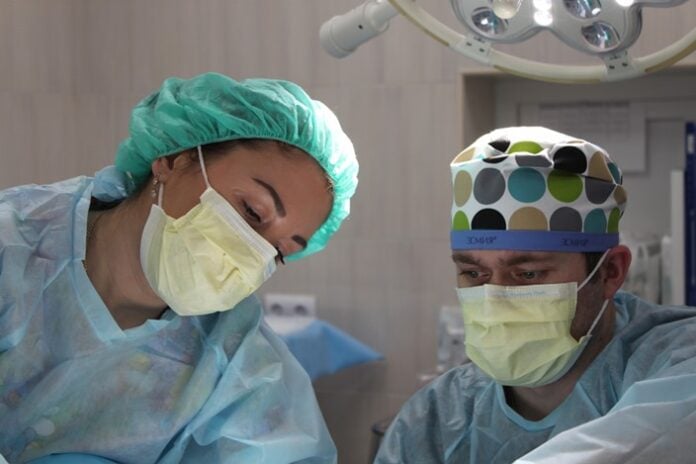As a medical student, gaining exposure to different surgical procedures is vital for your learning and development. While you will experience a wide variety in clinical rotations, some operations are too important not to familiarize yourself with early in your training. This article will highlight the top four surgeries that every medical student should learn about based on their prevalence, educational value, and ability to expose you to a variety of clinical specialties.
Table of Contents
Appendectomy
The appendix, located in the lower right section of the abdomen, can become inflamed due to infection or blockage. This condition is known as appendicitis, causing abdominal pain that feels worse with movement or deep breaths. While some cases can be managed non-operatively with antibiotics, surgical removal of the appendix, or appendectomy, is often necessary.
As one of the most common emergency general surgical procedures, understanding how to perform an appendectomy is essential for medical students. You can watch surgical operations videos on websites like Webop to observe step-by-step as surgeons use either an open or laparoscopic approach.
- In an open appendectomy, the surgeon will make a small incision in the lower right abdomen and isolate the appendix before cutting and removing it.
- For a laparoscopic appendectomy, several small incisions are made as instruments, and a camera is inserted to allow visualizing and working with the appendix internally.
No matter the technique, the key goal is to remove the inflamed appendix safely while avoiding potential rupture, which increases the risk of infection.
Being familiar with an appendectomy from the start of your medical education will set you up for success as you transition to working more directly with surgical patients. It also exposes you to commonly performed emergency general procedures.
Cesarean Section
About one-third of births in the United States are performed via C-section. A cesarean section, also called a C-section, is a surgical procedure used to deliver babies through incisions in the abdomen and uterus. It may be recommended when complications arise with vaginal delivery, such as fetal distress or failure to progress.
Understanding C-sections is particularly significant for OB/GYN specialists in training. Not only will you perform them, but you must understand factors that may call for one versus recommending a vaginal delivery.
The operation also provides experience with delicate uterine and abdominal tissues. Being able to explain the procedure to expectant mothers and recognize any potential complications are invaluable skills for all doctors as well.
Tonsillectomy
Sore throats and tonsillitis may lead to a tonsillectomy, which involves surgically removing the tonsils. Over half a million tonsillectomies are performed in the U.S. every year, making it another routine yet critical surgery for aspiring doctors to study.
To begin a tonsillectomy, the patient is given general anesthesia to sedate them. The surgeon then uses an instrument to hold the mouth open wide. A scalpel is used to make an incision to cut out each tonsil one at a time. There will be some bleeding as the tonsils are dissected and removed. The surgeon cauterizes the area to seal off blood vessels and prevent excess bleeding.
Once both tonsils are extracted, the surgeon irrigates the area and ensures no tissue remains. The incisions are closed with dissolvable sutures. While patients recover from the sore throat over two weeks, risks like bleeding or infection make tonsillectomies an important procedure for you as a medical student to understand inside and out.
Mastectomy
Breast cancer is the most common cancer in women. Mastectomy refers to the surgical removal of breast tissue and is a treatment option for many patients with breast cancer. There are two primary types:
- Partial (lumpectomy) mastectomy removes only the tumor and some surrounding breast tissue, preserving the skin and nipple. This is typically performed for earlier-stage cancers.
- Total (simple) mastectomy removes the entire breast, including all tissue, the nipple, and part of the muscle underneath.
Understanding mastectomies inside and out is essential for all physicians treating breast patients. During either procedure, surgeons make an incision along natural skin folds or around the darker skin of the areola. Dissections are then made to remove the specified tissues while keeping the detachments bloodless. Drainage tubes may be inserted to remove serous fluids. Flaps are also sewn together and dressed.
Conclusion
Familiarizing yourself with common procedures such as appendectomy and C-section is indispensable for building foundational surgical knowledge. Gaining Early exposure to these core techniques as a medical student will better prepare you for hands-on experience and serve you well as a physician in training.


